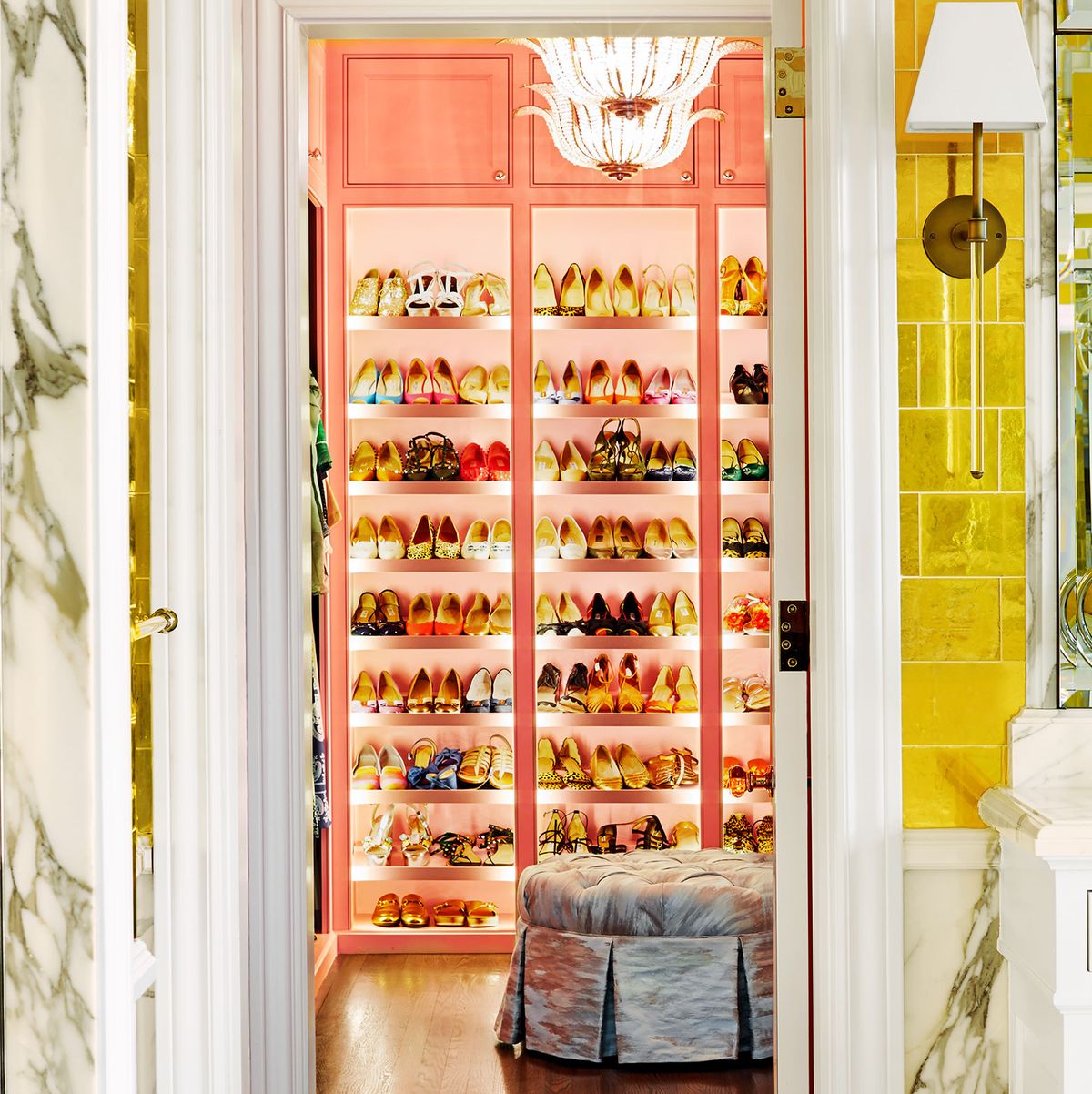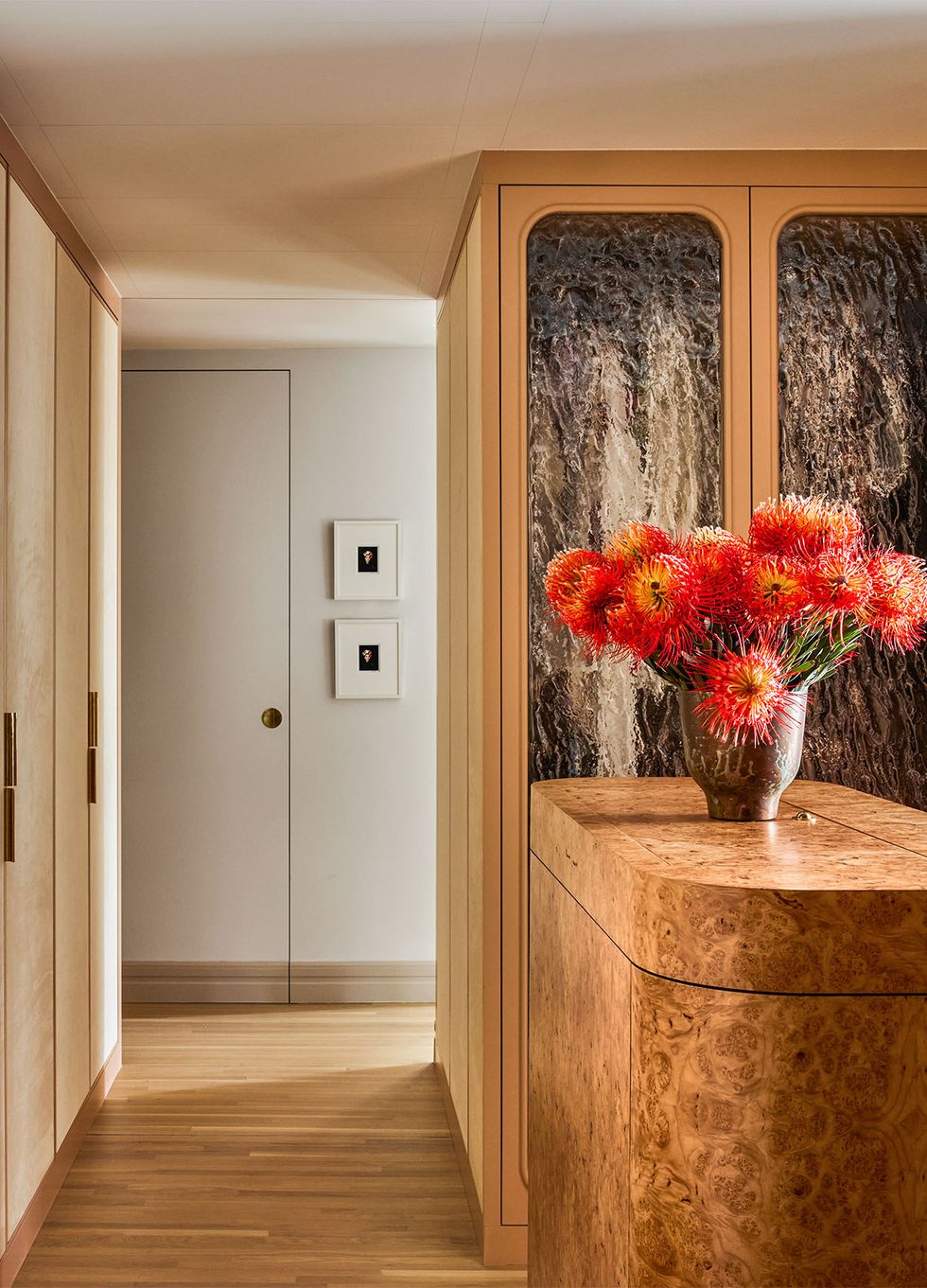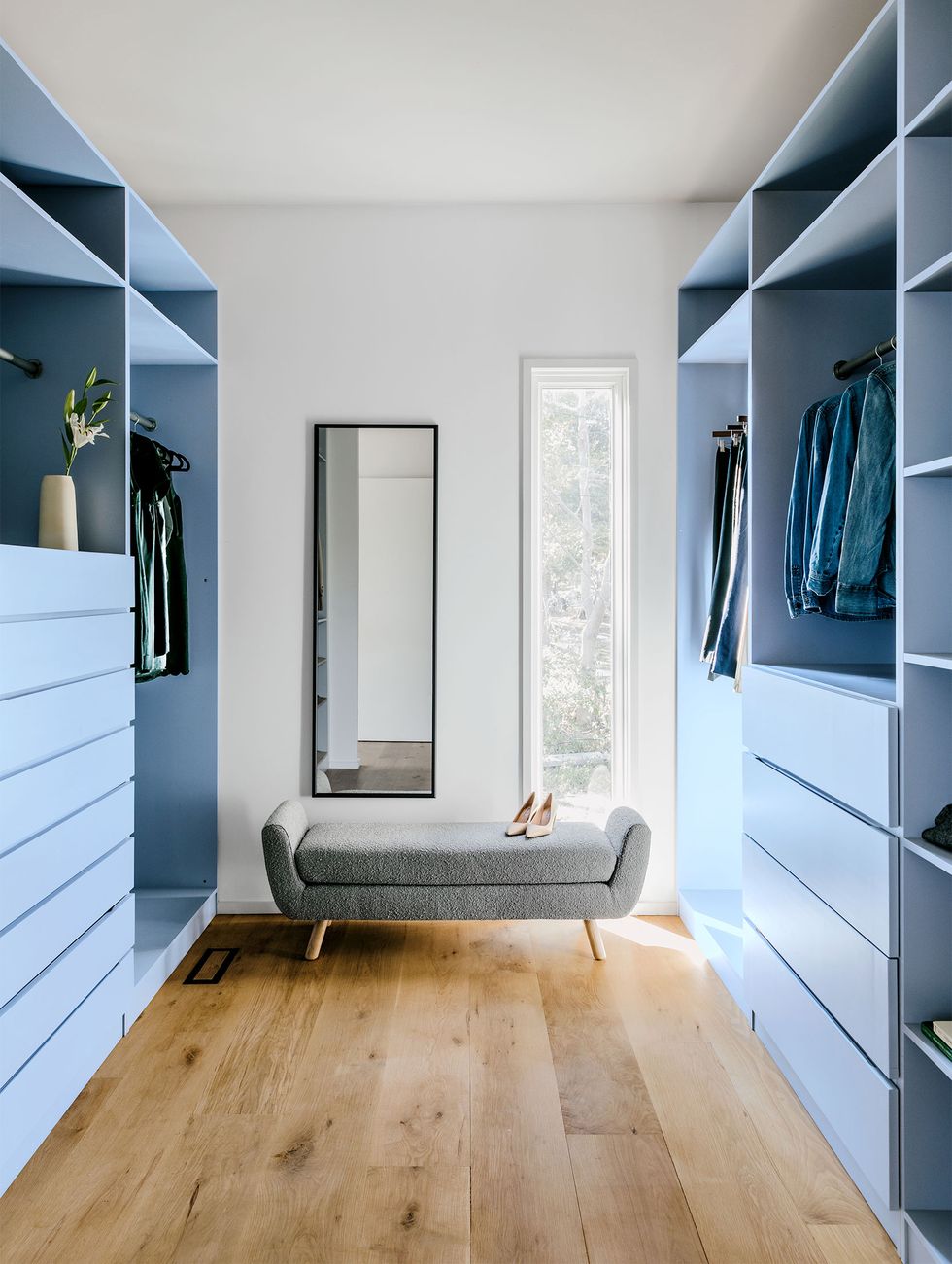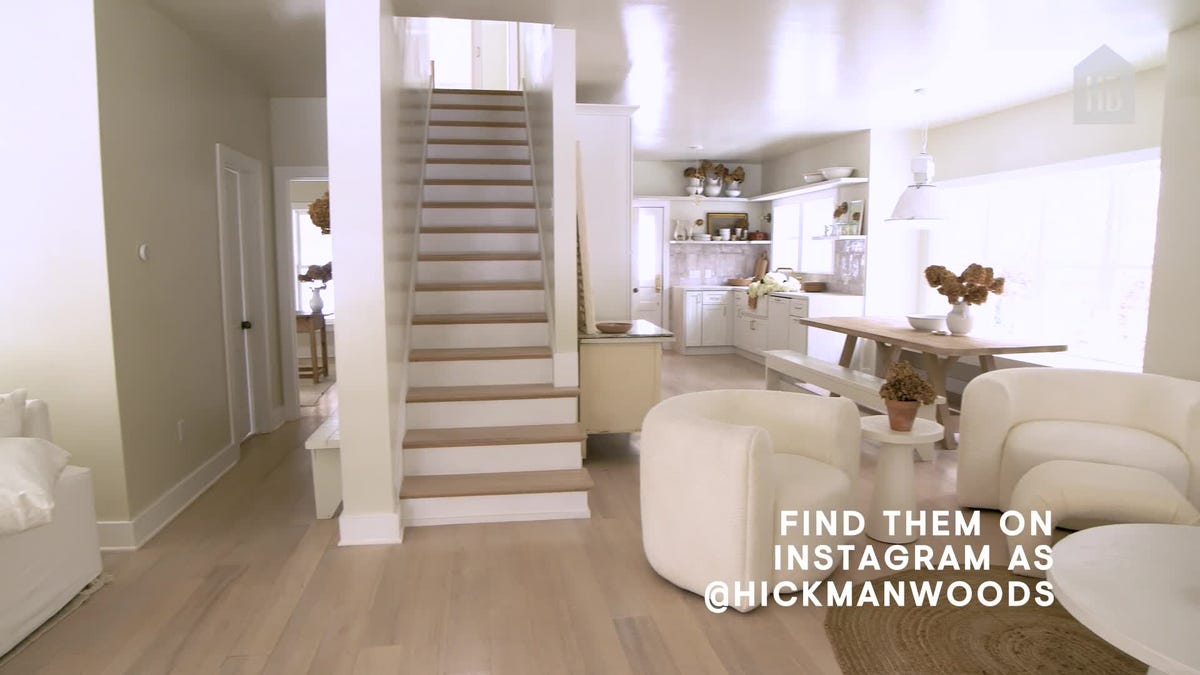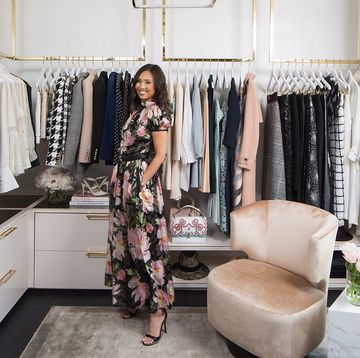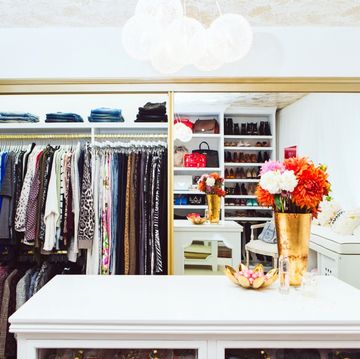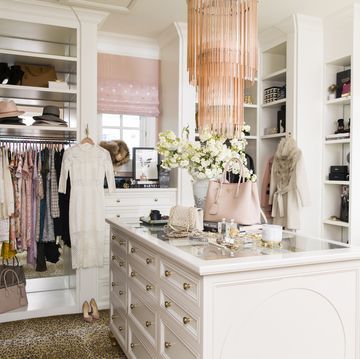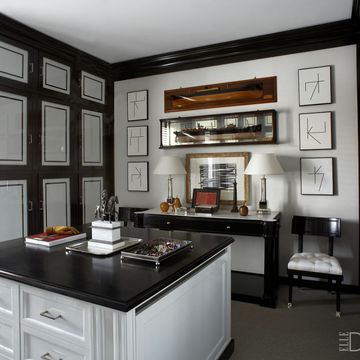Above: The view into a shoe-filled closet in designer Bailey McCarthy’s Houston home
If there is a single room in our homes that defines who we are and haunts our dreams, it is not the bedroom. Or the living room. Or even the kitchen. It is the closet.
Purely utilitarian on the surface, closets have never been just about storage. From the time these little rooms emerged in their modern form to hold newly minted mountains of consumer goods, they have allowed us to lead double lives. Outside are the uncluttered living spaces we arrange to reflect our ideal selves. Inside are the clothes, shoes, cleaning supplies, toys, hobbies, electronics, and mementos—beloved or forgotten—that reveal the changeable and often chaotic depths of our characters. At their most aspirational, closets become refuges where people can dress, sip Prosecco, and display handbags or watches as if they were artworks in a gallery. So attractive are these sanctums that their owners might even invite guests to take a peek.
At least, that is the scenario proposed by executives at California Closets: The company recently introduced an expanded collection of finishes that are meant to elevate the look of its standard laminated boards so that a closet can make a design statement just like any other room. Among the 16 surfaces in the group are those mimicking wood grain, linen, and paint.
“Personalization is the ultimate luxury,” says Jill LaRue-Rieser, the company’s senior vice president and chief product and merchandising officer.
Though Carrie Bradshaw and the Kardashian clan have both played their parts in inciting closet envy on television—with rooms that resemble upscale boutiques and allow owners to “shop” their own possessions—design professionals agree that the pandemic has forced a reevaluation of what closets can be. Edward Leaman, chief brand officer of California Closets, alluded to “liquid spaces” in the home that are commandeered to serve multiple functions, such as closets that have been converted into offices and go by the scrunched-up name “cloffices.”
Michael K. Chen, a New York–based architect who is known for working magic with small urban dwellings, likewise views the pandemic as giving rise to new typologies of space with fleeting or flexible uses. “They might be a space to be alone or one for self-care,” he says. Closets sometimes step up to provide these functions, though Chen prefers to design closets that are just for efficient storage and carve out areas for dressing or
me time in, say, the bedroom.
Beth Dadswell, an interior designer in London, says that her clients are focusing on areas that were previously considered private—bathrooms, bedrooms, and dressing rooms. “They don’t want these spaces to be purely functional anymore,” she says. “They want to decorate them in the same way that the Victorians would have done their sitting rooms.” To enjoy them in solitude, yes, but also to show them off.
Adding pizzazz to a closet doesn’t require a costly makeover. Washington, D.C., interior designer Jewel Marlowe enlivened some of her own closets by papering the walls and shelves in colorful patterns, while slathering others in paint to harmonize with the decor schemes in those rooms. Every time you open the doors, she says, “it’s a fun surprise.”
Of course, there will always be people who lead lives of pure domestic transparency and solve storage issues simply by having less stuff. “I believe everyone should live in one big empty space,” the artist Andy Warhol was quoted as saying. “But if you can’t go all the way and you really feel you need a closet, then your closet should be a totally separate piece of space so you don’t use it as a crutch too much. If you live in New York, your closet should be, at the very least, in New Jersey.”
CLOSET ALTERNATIVES
According to the 2020 book The Longing for Less, by Kyle Chayka, the average American household contains more than 300,000 items. What happens when the closets overflow? Karen Brothers, a professional organizer in San Diego, offered some ideas.
Wardrobes
These are great if you don’t require a lot of storage and can sacrifice the 30 to 40 inches of wall space they typically take up.
Movable Garment Racks
If items are seasonal and truly need to hang, they can live on racks. Otherwise, rotate items from the closet that are out of season, fold them, and stash them in less-accessible locations.
Blanket Chests
Do you have room at the foot of your bed? A blanket chest offers the convenience of storing bedclothes right where they’re needed.
Underbed Boxes
Containers that slide under a bed can provide extra storage in a pinch. But Brothers admits she purged her own. “It just felt lighter,” she says.
This story originally appeared in the October 2022 issue of ELLE DECOR. SUBSCRIBE
